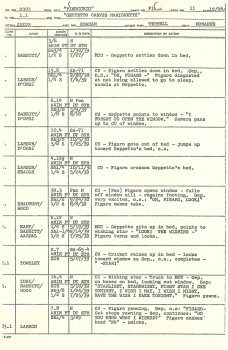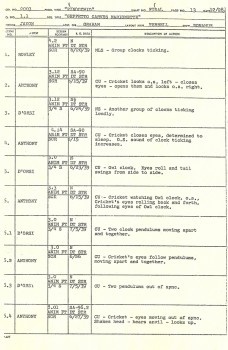Category ArchiveCommentary
Commentary &Daily post 27 Jul 2006 07:29 am
Scanning Scanning Scanning
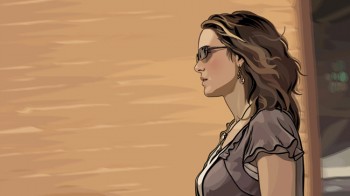 – I promise, this is my last post about
– I promise, this is my last post about
A Scanner Darkly. Please read this review by auteurist critic, Andrew Sarris. He has only admitted that he knows nothing about animation and only reviews them as films per se. That’s the way I like it. This is an excellent, perceptive and accurate reading of the film. Sarris still stands as one our finest critics; one with history, depth, intelligence, and a superior knowledge of film. And since I often agree with him, I like his reviews.
David Byrne also comments on the film & the rotoscoping on his site.
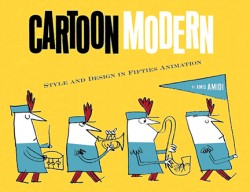 – If you haven’t been to Amid Amidi’s Cartoon Modern in a while, it’s time to take another look. He gives us another view of Rod Scribner; the UPA side.
– If you haven’t been to Amid Amidi’s Cartoon Modern in a while, it’s time to take another look. He gives us another view of Rod Scribner; the UPA side.
It’s nice to see this work and be reminded that the animator had a lot more depth than we’ve seen, even at Warners.
I can’t wait to get my hands on this book of Amid’s.
-Another site worth spending some time viewing is Daniel Thomas MacInnes‘ Conversations with Ghibli. This site is wholly dedicated to Ghibli films and actually features a number of complete films on the site. Ghibli’s Umi Ga Kikoeru (I Can Hear The Sea) is posted currently. Horus – The Great Adventure of Horus, Prince of the Sun was posted in its entirety earlier in July.
There’s a lot of articulate analysis on this site for fans of anime and Ghibli.
Commentary &SpornFilms &Theater 24 Jul 2006 08:57 am
Mako
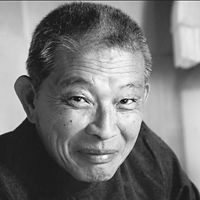 The actor, Mako, died Friday at the age of 72. He was a Japanese born American whose work I first came upon in Robert Wise’s film, The Sandpebbles. This is the role that brought him a well deserved Oscar nomination for Best Supporting Actor.
The actor, Mako, died Friday at the age of 72. He was a Japanese born American whose work I first came upon in Robert Wise’s film, The Sandpebbles. This is the role that brought him a well deserved Oscar nomination for Best Supporting Actor.
In 1976, I saw Mako live in Stephen Sondheim‘s brilliant musical, Pacific Overtures. As the center of the show – the reciter, shogun, emperor and American businessman – his voice dominates the soundtrack record which I played over and over until it was virtually one long scratch. His lines ever in my head. Unfortunately, I can only hear them spoken in his voice – other readings of the lines don’t work for me. It’s not the same.
In the middle of the world we float,
In the middle of the sea.
The realities remain remote
In the middle of the sea.
When it came time for me to cast my version of The Nightingale, I sought out Mako’s talent. We had shifted the Andersen story from China to Japan, and I got to play off some of those memories of Pacific Overtures. He was the consummate professional. He had just about memorized the script when he arrived; he recorded it quickly, and we parted. His voice is the strength behind my soundtrack.
Mako also was the voice of the Evil Sorcerer in Samurai Jack.
The NY Times obituary.
Art Art &Commentary 24 Jul 2006 07:31 am
All Things Muybridge
Eadward Muybridge is the original source for many animators.
His photographs in 1878 indicate the animation of a horse in its gait. These were the first indication of the ability to capture stills of motion, and it was the precurser of animation and all the devices that would lead to the motion picture.
I was surprised to learn that animators weren’t the only artists who visited the work of Muybridge. A Degas exhibit at NY’s Metropolitan Museum of Art once displayed several bronze statues of a horse by Degas placed in front of Muybridge’s photos. We know that Degas had copies of the photographs and sculpted them exactly.
Several books have long been in publication which print the collection of these many sequential photographs. They are available on amazon.
A number of sites focus on Muybridge’s art and give a good sampling of his work.
- The National Museum of American History gives us Freeze frame offers a short history of Muybridge, a sampling of his work, and even some placed photos creating animated clips.
- Temple University offers Eadward Muybridge, with a timeline, bio, and 22 photographic plates.
- The Royal Kingston library offers the Eadward Muybridge Bequest. Here’s a complete list and a rich sampling of all the photographer’s photos.
- The Minneapolis Institute of Arts has posted 36 plates from the Muybridge photographic collection.
- Two photo plates have been positioned to animate in a flash piece on the site, Tall Skinny.
- The french physiologist and chronophotographer, Etienne-Jules Marey, followed the work of Muybridge but wanted to do more precise work. You can find out about him at Momi-chronophotography.
Changing the subject slightly – Boxoffice Mojo offers us a breakdown of computer animated films, as they compare the box office receipts of them all. That same page lists upcoming computer animated films, including several unfamiliar to me.
You can also compare Cars‘ stateside grosses to other Pixar films, on a week-by-week basis at this page.
- Speaking of Cars, Daniel Thomas McInnes on his site Conversations On Ghibli points out a reference to Miyazaki by John Lasseter in his film. Astute observation.
Animation &Commentary 10 Jul 2006 08:48 am
Scanning
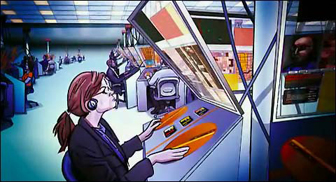 – I’m going to continue to defend Richard Linklater’s film A Scanner Darkly (at least until I see it next week.)
– I’m going to continue to defend Richard Linklater’s film A Scanner Darkly (at least until I see it next week.)
The director made one of my two favorite films of the last couple of years with Before Sunset. The rotoscoping technique will not make or break this film.
Like cgi or 2D animation, it’s just a technique. If it’s used to good effect, it’ll help the film; if it’s used to bad effect, it’ll hurt.
I read a letter on Animation Nation yesterday in which the writer was crazed over the idea of seeing a film in which they copy live-action. I wonder if he had the same problem with King Kong where a live action actor did all the principal motion for the gorilla. Motion Capture, to me, veers too far from animation to make it interesting solely as a technique. When the movie studio is trying to get an Oscar nomination for the live actor, I have to wonder if I should even call that technique animation. Yet, if it’s used in as good a way as those GEICO ads, where incredibly subtle motion just about makes the spots brilliant, then the technique is excellent.
Yes, I had many more problems with King Kong than the Motion Capture. The technique didn’t help or hurt my feelings for the film. The length, the direction, the script: these made me not enjoy the movie.
The same is true for A Scanner Darkly. I was totally mesmerized with Waking Life and found myself watching it several times in its repeat showings on television. What’s the film saying and how is it doing that. This is all I really want to know.
- At the box office the film did respectably well with $7700 per theater at only 17 theaters. Pirates of the Caribbean made $7600 per theater at over 4000 theaters.
- I doubt there will be a large outcry for the posts that were lost in my site’s glitch (The Letterman comics, the pages from my John Gardner illustrations), so I probably won’t rush to put them back up. Maybe when things get quiet.
- As a Yankee fan, I kinda enjoyed the Red Sox fighting against Chicago’s White Sox for 19 exhausting innings yesterday. Too bad they get a four day break after that game.
Commentary 13 Jun 2006 09:48 am
CARS – a flop?
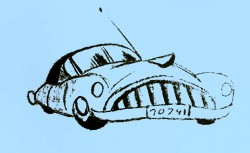 – In response to Hans Perk‘s comment on my post yesterday, I posted a reply. After writing it, I thought I should bring greater attention to this NY Daily News article which points out that despite the $62 million opening of Cars, Disney analysts were disappointed. They expected $70 million. The shares for Disney stock went down yesterday in reaction. This came as a surprise to me but shoudn’t have.
– In response to Hans Perk‘s comment on my post yesterday, I posted a reply. After writing it, I thought I should bring greater attention to this NY Daily News article which points out that despite the $62 million opening of Cars, Disney analysts were disappointed. They expected $70 million. The shares for Disney stock went down yesterday in reaction. This came as a surprise to me but shoudn’t have.
I haven’t seen the film and don’t know whether I’ll think it a good film. However, I was pleased with what I thought was its successful opening. PIXAR is the premiere company making animated films today, and I want them to do well – if only for the sake of the industry. But it’s obvious that too much money will never be enough.
Animation Artifacts &Commentary 14 May 2006 08:21 am
What a Group!
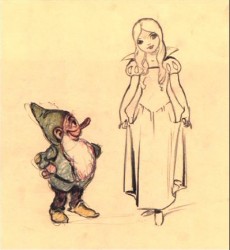 - I didn’t mean for yesterday’s post to turn into a “praise Grim Natwick” nor a “get on Art Babbitt” statement. I hope it didn’t come off that way.
- I didn’t mean for yesterday’s post to turn into a “praise Grim Natwick” nor a “get on Art Babbitt” statement. I hope it didn’t come off that way.
As I’ve said in the past, I treasure the drawings I have that were done by Art. I study and love every frame of any piece he’s ever animated. I just have more fun, personally – and I underline that word, personally, reviewing Grim’s animation.
I also didn’t say that Marlon Brando was a better actor than Laurence Olivier. They just came at it from different angles, and my preference has always been the more natural side of the acting world.
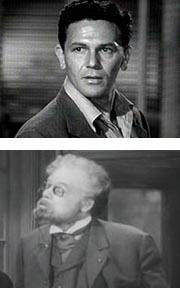 - Back in the late thirties when the Group Theater was formed, these actors went to Russia to search out Stanislavsky, an acting teacher who preached at the bible of natural movement – getting in touch with your inner soul to project through the acting.
- Back in the late thirties when the Group Theater was formed, these actors went to Russia to search out Stanislavsky, an acting teacher who preached at the bible of natural movement – getting in touch with your inner soul to project through the acting.
On Broadway, now, is a revival of Awake and Sing. Clifford Odets was a member of the original Group Theater, and his plays reflected their “common man” attitude to theatrical productions. They weren’t trying to do spectacles or Royalty plays, they were trying to project the “average Joe” back from the stage. It changed theater, created Henry Miller and a whole breed of acting styles. Compare, ex-Group Theater performer, John Garfield’s performances of the thirties with someone who was praised to the hilt back then, Paul Muni. Completely different acting styles – one natural and one overemotional and unrealistic.
The same was and is true of animators’ performances.
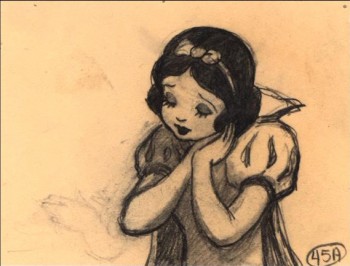 At Disney’s, these guys took their animation seriously. Some, such as Fred Moore and Norm Ferguson, thought they had it right and continued their own paths. Some looked into Stanislavsky and rejected it; others adopted it wholeheartedly. Still others, such as Grim Natwick, did it naturally and always had. Just as in the theater.
At Disney’s, these guys took their animation seriously. Some, such as Fred Moore and Norm Ferguson, thought they had it right and continued their own paths. Some looked into Stanislavsky and rejected it; others adopted it wholeheartedly. Still others, such as Grim Natwick, did it naturally and always had. Just as in the theater.
Next time you look at Fantasia, try just watching the acting styles. There’s nothing more Stanislavsky than Bill Tytla‘s scenes in Night On Bald Mountain, and there’s nothing less Stanislavsky than anything in the Pastoral.
Animation Artifacts &Commentary 13 May 2006 07:46 am
Theories
I have my own, odd thoughts about animators – great, master animators – these are the only ones I’m talking about.
I think there are two types of animator. Both types, I think, are brilliant but I have my preference. Basically it’s the same breakdown I have with live action actors: the difference between Laurence Oliver and Marlon Brando. Both are geniuses, but I’d go out of my way to see one of them more than the other.
One works from the outside in, and the other works from the inside out. It’s Royal Academy vs. Stanislavsky.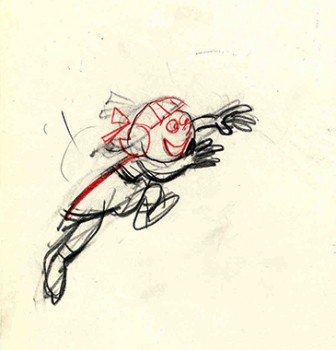
Animators:
– One is a brilliant mechanic of an artist who gets every pose every gesture just right. The movement of the character is perfectly flawless, the accents are always in the right place, the timing is perfect, and the weight captured is exact.
The character is developed but usually in a manipulated, studiously planned way. Usually, this animation, to me, is cold. Give the character a fake nose, and Laurence Olivier could be playing it.
(Art Babbitt, at the top of the triangle, is to me the model for this type of animator.)
(Natwick dwng from a Mountain Dew spot – click to enlarge.)
Then there is the emotional animator. The poses, gestures, actions of the character are emotionally executed by the animator as if this were the only way it could come out. The drawings are often violent and immediate – pencils ripping through paper and dark blotchy artwork.
This animator often puts emotion above mechanics, but (s)he digs to the depth of the part to find a real living thing. It isn’t always beautiful, but there’s a gem of a character on the screen. Like any living organism it’s unexpected and natural.
(Grim Natwick, to me, is the prime example of this type.)
No, I’m not saying if you draw dirty, rough, violent drawings you’ll be a great animator. I’m speaking somewhat metaphorically – although the two examples I gave actually did draw that way. I’m sure Art Babbitt did one or two rough, violent drawings in his life, but his animation feels tight, controlled, yet beautiful. Grim also did one or two clean drawings in his time – I have one, as a matter of fact, but his animation is controlled by his feelings, accumulated knowledge of craft, and emotions. It all feels immediate, spur-of-the moment. It’s alive!
I’ve only ever watched animated films with this guide going in the back of my head. Mind you, also, I have enormous respect for both of these types; it’s just that I prefer the emotional type. More than wanting my characters to think, I want them to feel.
My temptation, here, is to give the obvious list of animators and where they fall in my model, but I think for now I won’t. CGI also fits into this mold, but it’s not a great picture. I’m curious to hear what others think of this model.
Animation Artifacts &Commentary 14 Apr 2006 07:16 am
Good Friday
- The reviews for The Wild are much more positive than I would have expected given the pre-reviews. All of them mention the similarity to Madagascar, but they it gives them the chance to talk about the differences. Ice Age 2 dethroned? Here’s the NYTimes, The NY Daily News, the LATimes, Roger Ebert, and Emru Townsend.
 – Everyone out there interested in insightful animation should have tuned into the last two episodes of South Park. It’s an absolutely brilliant take on The Family Guy, The Simpsons, and South Park, itself. No wonder this show won a Peabody – they deserved it. This show, particularly these episodes, feature some of the best writing on television. Hilarious and insightful.
– Everyone out there interested in insightful animation should have tuned into the last two episodes of South Park. It’s an absolutely brilliant take on The Family Guy, The Simpsons, and South Park, itself. No wonder this show won a Peabody – they deserved it. This show, particularly these episodes, feature some of the best writing on television. Hilarious and insightful.
The controversy surrounding the show revolves around censorship on television. An episode of The Family Guy, which plans on showing an image of Mohammad, has all of America burying their heads in the sand to avoid facing the censorship issue. Kyle and Cartman set out to save the day in a struggle of our civil rights in the US. Bart Simpson also gets involved.
Comedy Central actually did censor the image of Mohammad from South Park, and the creators, Stone and Parker, are livid with the censorship they’ve had to face. The episode aired intact in Europe. For more about it: NYTimes, or The Telegraph.
- The following is a continuation of the production drafts for Pinocchio. Hopefully, these are of interest to enough people out there. I have to admit it doesn’t make for the most attractive visuals, but what ho.
Animation &Commentary 10 Apr 2006 08:45 am
Talking heads
- Yesterday I visited my mother and met up with one of my brothers there. During the ball game a Chas Schwab commercial came on. Perhaps you know the one: Bob Sabiston did it . That rotoscope animation of a man eating and talking to the camera about investments.
My brother said, during the spot, that the commercial is creepy. My mother said the same; she didn’t like looking at it and couldn’t understand why they didn’t just show the film of the guy eating, why did they have to animate it. I listened amused.
It was just yesterday that I was defending this style of work with Richard Linklater‘s upcoming film, A Scanner Darkly. Of course, there’s a difference – at least to me – between a Bob Sabiston commercial and a Richard Linklater film. Isn’t this the same territory?
I told my family that it had to be animated so that they would notice it. If it had just been a film of the guy eating talking to the camera, they wouldn’t be talking about it now . . . they wouldn’t have even noticed it. (Though I had to admit that it took a half dozen viewings before I realized who it was for, and I consciously looked for that.) It’s funny in that my 30 secs. or research on this spot led me to a site for a guy who rants about things. Sure enough, he has a page devoted to this series of commercials, and I think it’s obvious that a lot of people are bothered by this style. There’s also a good Slate article about it. (They offer two of the spots to view and an NPR conversation to listen to.)
Now the reason I’m so interested in all this is a short film I have in mind. It’s going to cover the same boring territory as this commercial, but with a more animated person. I’m curious to see where it takes me, just as I wonder where it might have taken Richard Linklater if he had actually animated his films (in 2D, of course) .
Animation &Commentary 04 Apr 2006 06:58 am
Double Lives
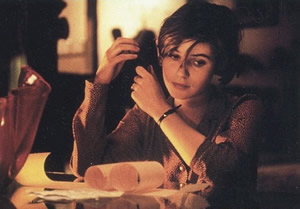 – I thought about Michael Barrier’s argument supporting the notion that it would be best for one person to be the sole animator of a character throughout a film. On his excellent site, this argument has played out for at least several months. It’s a good one.
– I thought about Michael Barrier’s argument supporting the notion that it would be best for one person to be the sole animator of a character throughout a film. On his excellent site, this argument has played out for at least several months. It’s a good one.
I thought about this when I read this week’s New Yorker Magazine review by Anthony Lane of the re-release of Kieslowski‘s The Double Life of Veronique. In that brilliant film, one actress plays two roles – they may be one character, East and West divided/together – but they’re played as if they were two. The characters are separated and move physically closer together throughout the film and even come close to passing each other.
In some ways this isn’t too far from the hackneyed TV cliché – the one actor plays both himself and his evil twin brother. However, in the Kieslowski film, it’s done very well and is germane to the film. Kieslowski isn’t the only one to do this. There were the evil/good twins played by Margot Kidder in Brian de Palma’s Sisters; there was Kim Novak’s dual/singular role in Hichcock’s Vertigo, and, of course, there were Hayley Mills and Lindsay Lohan in two separate versions of The Parent Trap.
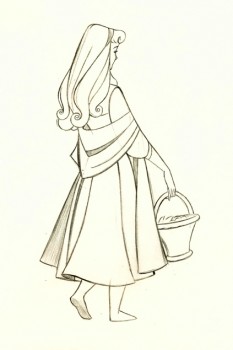 What made me think about Barrier’s argument, was my reading some of the scene breakdowns for Disney’s Sleeping Beauty. We all know that Marc Davis animated the evil queen, Maleficent. I was reminded, reading the breakdowns, that he also animated some of the virginal Aurora in the wooded scenes along with Hal Ambro.
What made me think about Barrier’s argument, was my reading some of the scene breakdowns for Disney’s Sleeping Beauty. We all know that Marc Davis animated the evil queen, Maleficent. I was reminded, reading the breakdowns, that he also animated some of the virginal Aurora in the wooded scenes along with Hal Ambro.
Given the Barrier premise, that one animator should animate or supervise the same character, we have to ask what about the animator who animates two or more characters in the same film. (In the world in which I’ve been animating, this is the more likely.)
Bill Tytla and Fred Moore supervised most of the seven dwarfs. Here we have an animator animating seven principal and titular characters. How does this play into the theory? Is it obvious in that the animator would just follow through on all of her(his) characters and try to give different personalities to them?
(Click image to enlarge.)
Does asking this question preclude that the animator can create seven personalities in the same film? (Moore and Tytla did pretty well by their characters, although it was probably easier to vary the animation of characters named Sleepy and Happy than it would be to give personalities to two named Bill and Mark. There’s always the Lindsay Lohan/Hayley Mills route – give one a British accent the other an American.)
I ask it only because I’m curious to know how one would gauge this side of the same argument. And I wonder if any out there have thoughts on this? Or experiences?

